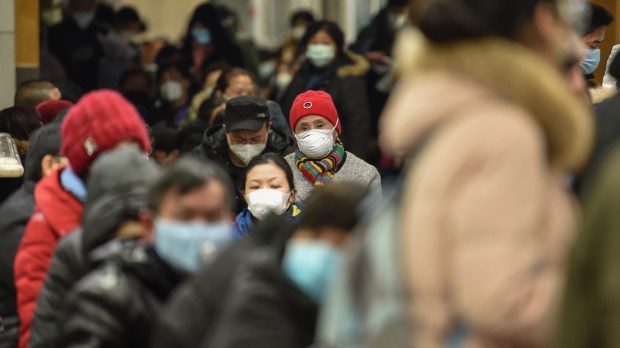The central Chinese city of Wuhan has been in the news for weeks now, as the coronavirus COVID-19 has spread throughout that metropolis and internationally. Chinese authorities have imposed widespread quarantines and built new hospitals in response to the outbreak.
One of the first hospitals designated to treat the epidemic has a Catholic past. The predecessor of the Wuhan Jinyintan Hospital was the Wuhan Infectious Diseases Hospital, which was named the Father Mei Memorial Catholic Hospital of Hankou when it was first established in 1926, a Franciscan website called OFM pointed out. It was named for an Italian Franciscan missionary, Pascal Ange (Angelicus) Melotto, who took the Chinese name Mei Zhanchun.
“Mei” is the Chinese character for “plum,” the website said.
Born in Lonigo, Italy, in 1864, Melotto entered the Order of Friars Minor in 1880 and went to China in 1902. Involved in a local conflict, he was kidnapped in 1923. A large ransom was demanded, and the Italian and French embassies got involved in trying to resolve the issue.
“While he was kidnapped, he was moved many times between Hubei and Henan provinces and died three months later, when one of the kidnappers shot him in the stomach with a poisoned bullet,” the website said. “Shortly before dying, he had confided, ‘I am happy to die for the Chinese. I lived in China for the Chinese and now I am happy to die for them.’”
The site provides more background:
In the past, when a foreign missionary was killed, his home country would demand huge reparations from China, thus giving the impression that the Church was on the side of imperialism. In 1919, however, Pope Benedict XV had issued Maximum illud which warned against the union of colonialism and religion, and so the first Apostolic Delegate to China, Celso Costantini, insisted that instead of concessions being granted to the recently established government of Mussolini, a hospital should be built in honor of Melotto. His remains were eventually transferred to a memorial structure called the Plum (“mei”) Pavilion. As one of five local Catholic hospitals, Fr. Mei Memorial Hospital played an important role serving the poor in Hankou. By 1949, there were 150 beds, two clinics, 20 Franciscan Sisters of Christian Doctrine, and seven nurses. In 1952, when all missionaries were expelled, the hospital was confiscated and was renamed. In 2008, the original building was destroyed and the hospital moved to another location as the Wuhan Jinyintan Hospital. The Plum Pavilion has been dismantled, waiting to be reassembled one day…. and the Franciscan missionary presence also awaits the opportunity to continue where it left off.
Unfortunately, a 29-year-old doctor battling the coronavirus died from the disease while being treated Wuhan Jinyintan Hospital Jan 30.

